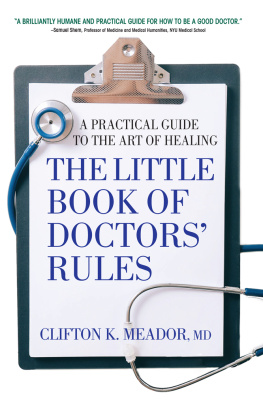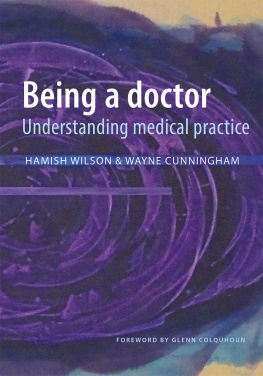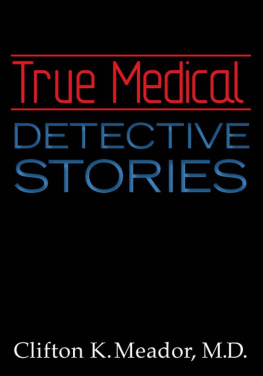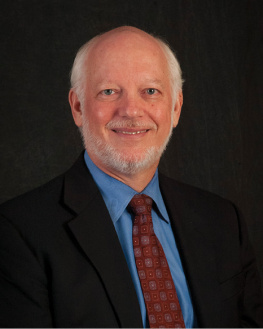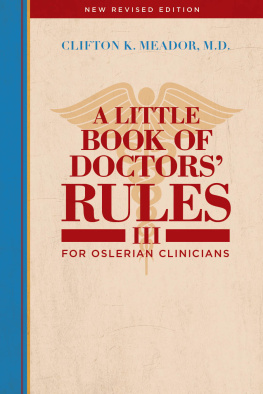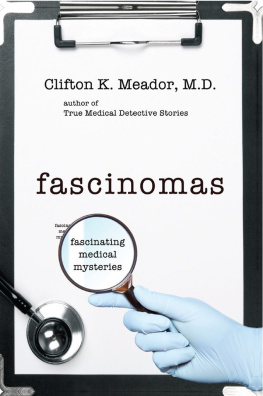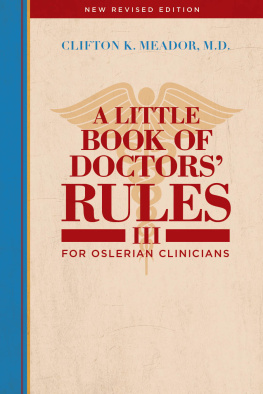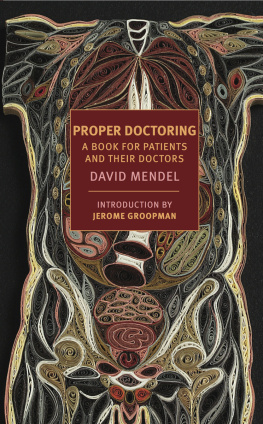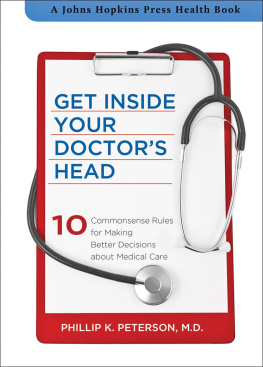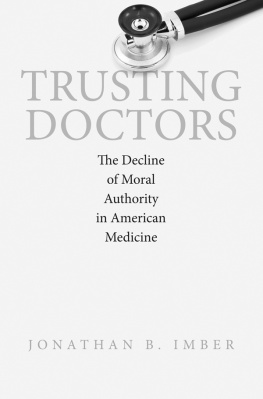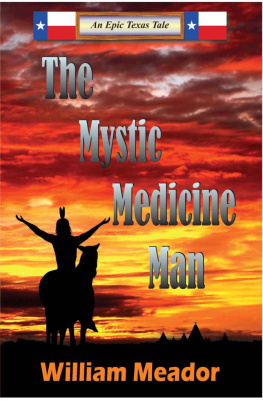Front Matter

THE LITTLE BOOK
OF DOCTORS RULES
CLIFTON K. MEADOR, md

The information and advice contained in this book are based upon the research and the personal and professional experiences of the author. They are not intended as a substitute for consulting with a healthcare professional. The publisher and author are not responsible for any adverse effects or consequences resulting from the use of any of the suggestions, preparations, or procedures discussed in this book. All matters pertaining to your physical health should be supervised by a healthcare professional. It is a sign of wisdom, not cowardice, to seek a second or third opinion.
C over D esigner : Jeannie Rosado
I n -H ouse E ditor : Michael Weatherhead
T ypesetter : Gary A. Rosenberg
Square One Publishers
115 Herricks Road
Garden City Park, NY 11040
(516) 535-2010 (877) 900-BOOK
www.squareonepublishers.com
Library of Congress Cataloging-in-Publication Data
Names: Meador, Clifton K., 1931- author.
Title: The little book of doctors rules / Clifton K. Meador.
Description: Garden City Park, NY : Square One Publishers, [2020] |
Includes index.
Identifiers: LCCN 2019059159 (print) | LCCN 2019059160 (ebook) | ISBN
9780757004933 (paperback) | ISBN 9780757054938 (ebook)
Subjects: MESH: Physician-Patient Relations | Aphorisms and Proverbs
Classification: LCC R727.3 (print) | LCC R727.3 (ebook) | NLM WZ 309 |
DDC 610.69/6dc23
LC record available at https://lccn.loc.gov/2019059159
LC ebook record available at https://lccn.loc.gov/2019059160
Copyright 2020 by Clifton K. Meador
All rights reserved. No part of this publication may be reproduced, scanned, uploaded, stored in a retrieval system, or transmitted, in any form or by any means, electronic, mechanical, photocopying, recording, or otherwise, without the prior written permission of the publisher.
Printed in the United States of America
10 9 8 7 6 5 4 3 2 1
Contents
Acknowledgments
In my book Twentieth Century Men in Medicine: Personal Reflections, I talked about my training with eight of my mentors. Many of the rules in this book come from the influences of these men, whom I would like to thank for shaping my professional mindset in clinical medicine.
Of the four Vanderbilt medical school professors on this list, John Shapiro taught me pathology at the autopsy table, Robert Hartman illuminated the details of hematology, Rudolph Kampmeier was the master of the physical examination and diagnostic process, and Elliot Newman demonstrated the need to doubt and question every finding.
During my post-graduate years, Robert Loeb, chief of my residency at Columbia-Presbyterian, insisted on a science of medicine and a scientific use of medication. David Rogers, my chief of medicine at Vanderbilt, showed me the art of bedside medicine. Grant Liddle, my mentor in an endocrinology fellowship, taught me the scientific method of inquiry.
Finally, Tinsley Harrison, chair of medicine at the University of Alabama at Birmingham, showed me the value of having patients keep diaries to uncover hidden causes of symptoms.
Many of the rules in this book come also from colleagues, classmates, and friends who taught me much. I thank them all. I wish I could remember which rules came from which people, but those memories are now a blur in my mind.
I would also like to thank my wife, renowned portrait artist Ann Cowden, who provided editorial assistance and encouragement at every step.
Introduction
S ince graduating from Vanderbilt University School of Medicine in 1955, I have witnessed many changes in the practice of medicine. The most dramatic changes have been the marked increase in specialists and the equally marked decrease in generaliststhose physicians and other healthcare professionals in first-contact medical care, by which I mean general internists, family physicians, general practitioners, pediatricians, and nurse practitioners. These professionals see patients as they enter the healthcare system. At this initial point in the process, the nature and cause of a clinical problem is unknown.
From my experience in primary care, and from discussions with colleagues, I have found that over 50 percent of primary care patients do not have a definable medical disease. They have complaints or symptoms but no medical disease. Nevertheless, while there may not a definable medical disease to explain every symptom, every symptom has a definable cause. Uncovering these hidden causes takes careful listening, observation, and a collaborative, trusting relationship between professional and patient. Identifying these hidden causes is the essential role of primary care and a major focus of the rules in this book.
While this book is aimed mainly at those in primary care, it is meant to be used by all healthcare professionals. Divided into six parts, it contains rules for developing patient rapport, the diagnostic process, mental status examination, the use of medication, caring for difficult patients, and being a professional. These rules provide guidance on how to learn the details of a patients lived life, establish a trusting relationship with a patient, and address the concerns of a patient. By seeing each patient as a human being instead of a collection of symptoms, healthcare workers of every variety can significantly improve the healthcare system, benefitting not only patients but also themselves.
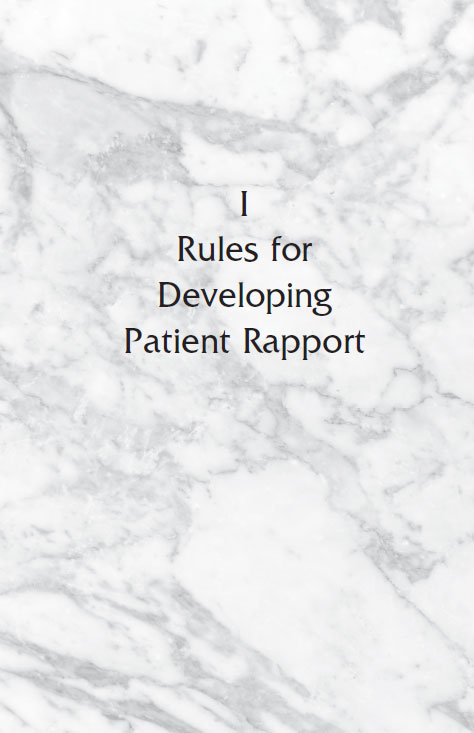
The interview is the beginning of treatment.
Learn to listen to the life story of a patient. Health conditions tend to arise from a persons lived life.
Sit down when you talk with a patient. Dont talk with a patient while you keep one hand on the door.
While listening to a patient, do not do anything else. Just listen.
Let the young know they will never find a more interesting, more instructive book than the patient himself.
G iorgio B aglivi
Let a patient ramble on for at least five minutes at the outset of an interview. You will learn a lot.
There is no substitute for direct observation.
Learn to watch a patients facial expressions.
Always face a patient. Maintain eye contact but do not stare. Some people cannot tolerate very much eye contact, so you may have to look out of the corners of your eyes.
Notice the change in a patients respiratory rate as you discuss different subjects. Watch the top edge of the shoulders move with each breath.
If a patients eyes are moving as you talk, that patient is not paying full attention to what is being said.
It is impossible to think and listen simultaneously. Listen. Think. Listen. Think.
Talk with patients, not to them.
Adjust your pace to the pace of your patient.
Inquire about touchy subjects by using statements instead of questions. For example, say, I am wondering how much alcohol you drink each day, instead of asking, How much alcohol do you drink daily? A patient will find a statement less intrusive than a question.
If I set out to prove something, I am no real scientistI have to learn to follow where the facts lead meI have to learn to whip my prejudices.
L azzaro S pallanzani
Whatever subject a patient is most comfortable discussing is probably not the real trouble.
Listen carefully when a patient begins a comment by saying, This may not be important, but...

